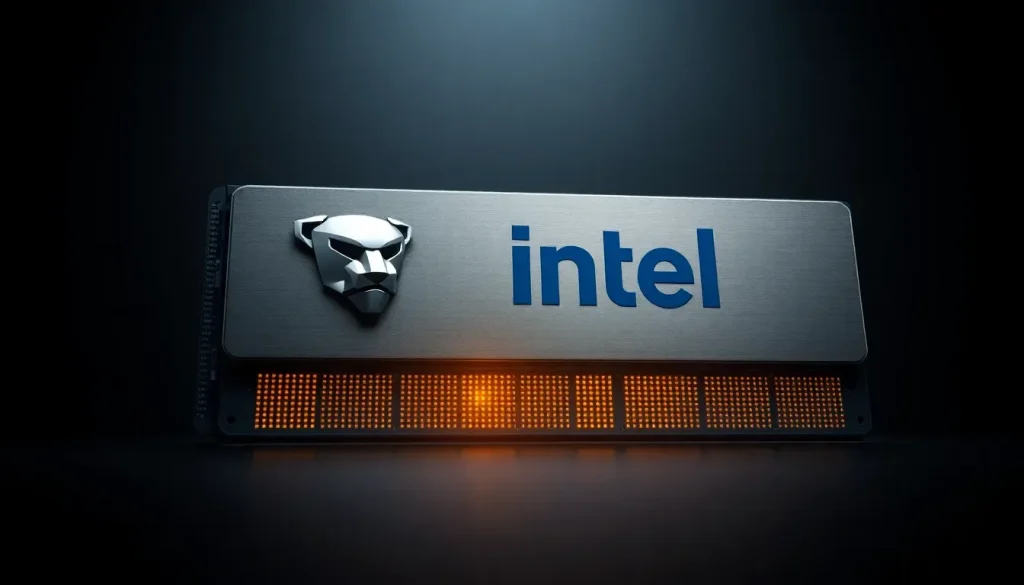Intel announces Panther Lake GPU as new industry standard

Intel is on the verge of a significant leap with its new Panther Lake architecture, promising a revolutionary step forward rather than just a minor upgrade. According to Tom Peterson, a key figure behind Panther Lake's architecture, this new generation of processors and integrated graphics will set a "new standard for Intel and the entire industry." This statement is backed by nearly two decades of evolution in integrated graphics, culminating in a synergy with artificial intelligence and the third generation of its Celestial architecture featuring the Xe3 iGPUs.
The recent video presentation by Intel focused not just on what is about to be released but also on how far they have come, illustrating the evolution of their integrated graphics technology. This trajectory indicates that the company’s advancements have been a significant internal success, and what is set to launch soon will represent a pivotal moment.
A look back: Intel's architectures Alchemist and Battlemage in integrated graphics
The journey of Intel in the realm of integrated graphics has been extensive. The company has transitioned from early chips that could barely display basic interfaces to integrated GPU solutions capable of running demanding titles. Initially, Intel utilized the spare capacity of its CPUs to provide rudimentary graphical functions. However, the gaming industry’s explosive growth prompted a serious investment in this sector.
This investment led to the introduction of the Xe architecture with Alchemist and Meteor Lake, the first modern architecture designed to efficiently distribute workloads between CPUs and GPUs, enabling decent performance for games and various applications. It was during this time that Intel began to catch up with AMD's APU offerings, which held a significant market lead.
The next major advancement came with Xe2, forming the basis for the Lunar Lake and Battlemage architectures. During this phase, Intel reported a sixfold increase in compatibility testing and improved adjustments for common APIs like DX11, DX12, and Vulkan, aiming for a seamless user experience.
Also part of this era was the development of XeSS, Intel's AI-based upscaling technology, and its successor, XeSS2, which introduced frame generation and latency reduction features. Peterson highlights that over 600 games have adopted these technologies within a year, with about 60 utilizing the second version featuring FrameGen. This rapid uptake is notable, especially given the competitive landscape dominated by AMD and NVIDIA.
The unification of hardware and software for a hybrid computing experience with AI
Despite facing criticism from Original Equipment Manufacturers (OEMs) regarding performance, Intel remains confident about the Panther Lake launch. The main concern revolves not around power output but rather the accompanying software that supports the GPU.
Peterson emphasized that the new GPU will handle nearly half of the AI functions from previous generations, positioning the convergence of CPU, GPU, and new NPU technologies as the central focus of Panther Lake. The objective is to enable AI tasks that were traditionally cloud-dependent to be executed locally, utilizing agents capable of performing independently with straightforward commands.
Intel's OpenVINO framework will be critical for ensuring these agents function across various chips. This full integration extends to energy management and memory allocation, with recent options allowing users to allocate additional RAM to the graphics processor. These optimizations promise a 10% performance improvement without increasing power consumption, which is crucial for laptops and portable devices. Panther Lake aims to maximize these advantages with a new processor design, this time without the traditional constraints of the mobile operating platform (MoP).
Intel's commitment to GPUs: Panther Lake as the new industry benchmark
Intel's ambition for Panther Lake is to maintain a balance between power and efficiency, even as they raise the technical bar with the Xe3 architecture. Peterson has openly stated that Panther Lake will not only represent an advancement but also a new industry standard:
“The graphics in Panther Lake will set a new standard for us, and indeed, we believe it will be a standard for the industry, and we will discuss this further when these products are ready to be launched.”
If Panther Lake lives up to its promises, it will herald not only the arrival of the third generation of Xe architecture but also a new phase for x86 processors, where CPU, GPU, and AI NPU components will function as a cohesive unit rather than separate entities. For this vision to materialize, software will play a crucial role, nearly as significant as the hardware itself.
As the industry anticipates the release, the question remains whether Intel can indeed position Panther Lake and its Xe3 GPU as a new standard that can genuinely compete with offerings like the AMD Strix Halo. The compilation video showcasing the evolution of Intel's three architectures suggests that something truly disruptive is on the horizon.
For further insights into Intel's advancements, check out this video that dives deeper into their upcoming technologies:




Leave a Reply